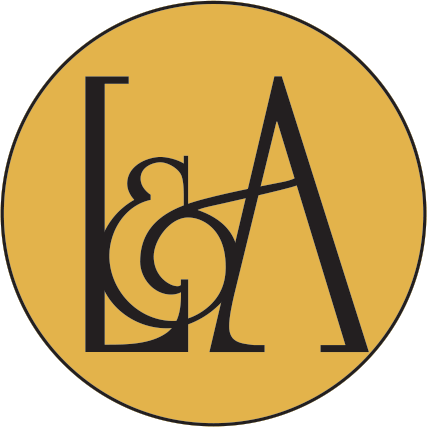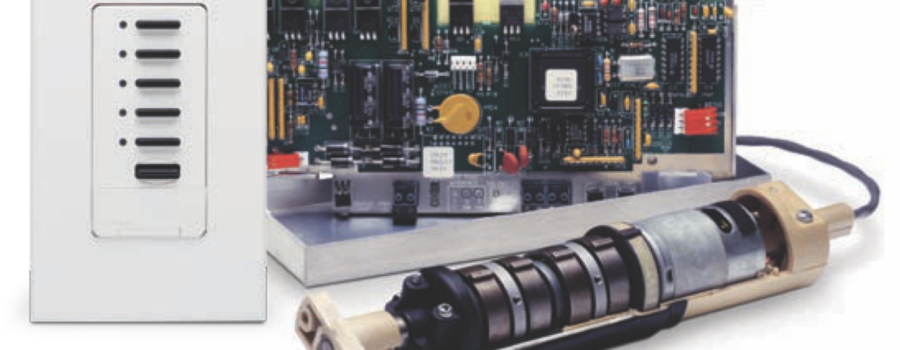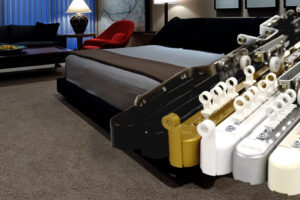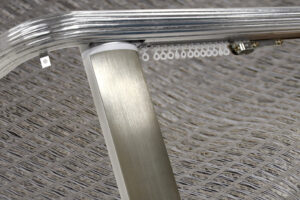Smart home automation wasn’t exactly intelligent in the early days of motorization for draperies and shades, when even a dimmer switch was relatively new. A lot has changed and L&A has driven that progress.

In the early 1980’s, Lancaster began experimenting with motorization for draperies and shades. Truth be told there wasn’t a lot to work with … radio systems (wifi? what’s a wifi?) hadn’t been adapted for commercially viable sizes and scope and even leaders like Lutron were still relying on Founder Joe Spira’s designs for hard-wiring to implement dimmers for the entire house.
“We were heavily involved in innovating our performance and design in the midst of the Roman Shades trend at the time, so motorizing things was a neat concept with very little support,” said Lancaster & Associates President Philip Clemmons . “things were big, bulky clunky and unreliable but we looked at wiring, motors and controls and wondered if we could do something special.”
As with many developments during the time, miniaturization of circuit boards was fueling electronics of all ilk. Infared lighting controls, and Lutron’s whole-home lighting controls and Serena™ roller shade made developing solutions easier and slightly less expensive. Commercial installations were paving the way for (residential) automation via their scale and demand for reliable systems.
Now an entire home can be automated via DIY products, and voice controlled systems from Amazon, Google and Apple each integrate with innovations from each of the major shade and drapery motor manufacturers. Designers, architects, installers and workrooms are all seeing Smart Home demand climb, and many are scrambling to integrate motorization into their businesses.
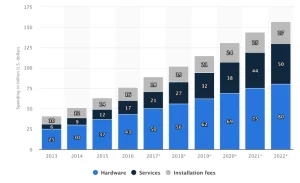
Consumer spending on smart home systems and services worldwide from 2013 to 2022 (in billion U.S. dollars) Image: Statista
Point of fact, 2018 worldwide automation sales are projected to top $100 billion, with installation and services garnering roughly 20% and 30% of the pie respectively. So, where do you fit in, in this drive to meet demand from homeowners and institutional buyers?
“We have heard plenty of discussions on motorization for draperies and shades with designers, clients, installers and workrooms,” says Clemmons. “and whether it’s whole-house automation or a single bedroom, there’s some trepidation as to where it fits into designs.”
“Designers don’t want it to distract from the overall look, and still tend to refer to it as a contemporary design component, but neither of those concerns are valid for today’s installations. We incorporate sleek motors and controls into all design styles — new construction or renovations — and make it as simple as a tap on a watch or voice command,” he added.
Visit our motorization section to get more details and to download the Guide to Motorization.
Lancaster is often sought out for consulting and specialized custom applications in addition to residential systems. The company has also opened up new service offerings to workrooms, installers and window professionals, providing components, wiring or prebuilt systems and installation assistance where needed.
